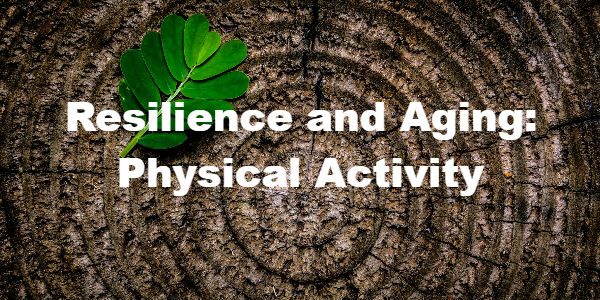This article is part of a 5-part weekly series on Resilience and Aging from our partner Dr. Gillian Leithman at Rewire to Retire.
Dr. Gillian Leithman offers her considerable expertise and knowledge on the challenging transition period between career and retirement. Her writing offers readers advice and insights into preparing to retire and living a fulfilling post-career life.
The concept of resilient aging is not just limited to how people respond to challenges as they age. It also includes a lifestyle in which one practices health promoting behaviors to guard against physical disease and cognitive decline. In other words, the resilient ager values and engages in physical exercise to ensure, as best as he can, that he will remain healthy for as long as possible.
In addition to the physical benefits derived from exercise, scientific findings indicate that such activity nurtures a “stress resistant brain” that over time becomes less reactive to stress, and recovers more quickly from the stress response. Exercise’s magic lies in its neuroprotective benefits.
Exercise increases brain-derived neurotrophic factor which counteracts stress, fosters brain growth, and supports brain health in two regions most effected by stress; the prefrontal cortex and the hippocampus. In addition, exercise causes the release of GABA, a neurotransmitter that serves to dampen overexcited neurons that play a key role in fear and anxiety.

When a person first begins a moderately intense aerobic exercise regiment, stress hormones surge. However, with time and increased physical fitness, stress hormones decrease because the body and brain become more efficient at handling and recovering from the exercise (stressor). Scientists believe that this process extends beyond the realm of exercise and teaches the brain how to handle mental and social challenges.
While there are extensive brain and body benefits associated with exercise, I do recognize that starting an exercise regimen for those of you who have never exercised before could seem like a daunting task.
Here is where we are going to take a note from the rodent literature.
The greatest brain benefits have been detected when researchers place running wheels in rats’ cages and permit them to run when they want and for how long they want. What scientists believe this means for us humans, is that we like to have control over the activities we choose to participate in. So, brainstorm possible ways to get fit, and get creative with your choices.
In addition, depending upon your fitness level, you may want to set short and long-term goals. For someone just starting out, a short-term fitness goal may be walking 15 minutes continuously before resting. A long-term goal might be to visit family or friends that have homes with stairs or play with young and energetic grandchildren.
For those of you currently engaged in an active lifestyle, you may gain the most from increasing the intensity or duration of your current workout. Seek out the advice of your medical doctor before starting or changing their exercise program.
Check back next week when we look the final chapter in this series, Resilience And Aging: Part 5- Brain Fitness.
- Part 1- Goal Pursuit: Living A Life That Matters
- Part 2- The Helper’s High: The benefits of altruism
- Part 3- Realistic Optimism

